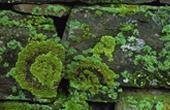Mycotoxins

Mycotoxins are mycogrubic toxins( mold fungi), which have a toxic effect even in extremely small doses. For this reason, they were found in food products relatively recently, which was facilitated by the appearance of highly sensitive instruments and methods of analysis. In the vast majority of cases, fungi that form mycotoxins are affected only by plant products. The optimal conditions for the development of these molds are a slightly elevated temperature( about 30 ° C), combined with high humidity( about 85%).
For this reason, in case of mold on the products even if the storage rules are observed, it is recommended to discard the product completely, and not to clean the mold from it. Although mold develops on the surface, but the toxins it produces can penetrate rather deep into the product, and changes in its appearance and consistency are not observed.
Consider the places where mycotoxins are most common.
Aflotoxin is one of the most dangerous mycotoxins. It has a carcinogenic( neoplastic) effect. In the nature of aflotoxins, quite a lot are found, but only five of their main representatives, denoted by the letters of the Latin alphabet B1, B2, C1, C2, M1, are studied to a greater extent. Most often aflitoxins are found in foods such as peanuts( peanuts) and corn. In fresh corn, due to the high natural humidity, favorable conditions are created for the development of the fungus, which produces aflitoxins.
Patulin is the second most common mycotoxin. This substance also has a carcinogenic effect. In most cases, it occurs in moldy apples, sea buckthorn, as well as other fruits, fruits, vegetables, berries or juices, jams cooked from moldy fruits and berries.
Another dangerous mycotoxin - zeralenone is found in rotten corn cobs.
In animal products, mycotoxins are practically not found. Perhaps they can be found only in milk. And then it happens only in cases of feeding cows with moldy forages.
The appearance of mycotoxins at home can be due to improper preparation or storage of various fruit and berry compotes and jams that have molded as a result. If the surface of the product in the can is completely covered with mold, then it is recommended to discard this product without fail. Its use for reasons of false "economy" can lead to a serious violation of health. Toxins of mold are able to penetrate very deep into the product, but it is impossible to determine the degree of penetration by eye because of their colorlessness. Based on these same considerations, you can recommend not to eat even partially damaged rotten apples and berries.
Materials used:
Shilov VN, Mits'yo VP"Healthy Nutrition"
